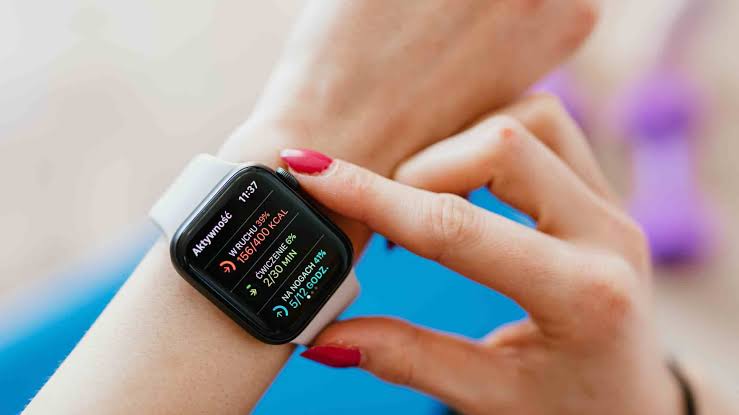Discover the importance of wearable security and data protection. Learn how to safeguard personal information collected by smartwatches, fitness trackers, and other wearable devices. Explore strategies for securing devices, including strong authentication, data encryption, and regular software updates, to protect user privacy and ensure safe use.
Wearable technology has become integral part of modern life. It offers numerous benefits ranging from health monitoring to enhanced connectivity. As wearables like smartwatches fitness trackers and augmented reality glasses become more prevalent, importance of ensuring security and data protection has grown critical. This article explores why wearable security and data protection are essential. It discusses strategies and measures that can be employed to safeguard devices and data they collect
Understanding Wearable Technology
Wearable devices encompass wide range of technology including smartwatches, fitness trackers health monitors, smart glasses. These devices collect and store variety of personal data such as health metrics, location information communication logs. Given the sensitive nature of this data, ensuring protection is paramount
1. Types of Data Collected: Wearables gather diverse types of data. This includes biometric information (heart rate steps taken, sleep patterns) location data (GPS tracking), personal communications (messages calls). This data can provide valuable insights into users' health and lifestyle. However, it also presents potential privacy risks if not adequately protected.
2. Potential Threats: Wearable devices can be vulnerable to various security threats. These include unauthorized access data breaches, malware attacks. The increasing connectivity of wearables makes them attractive targets for cybercriminals looking to exploit personal information
The Need for Wearable Security
Ensuring security of wearable devices is crucial for protecting users' personal data and maintaining trust in technology. Several factors highlight importance of wearable security
1. Personal Privacy: Wearables often collect highly sensitive information about users' daily activities and health conditions. Unauthorized access to this data can lead to privacy breaches and identity theft. Misuse of personal information is another risk. Securing wearables safeguards users' privacy and ensures that data is only accessible to authorized individuals
2. Health and Safety: Many wearables monitor health metrics. They provide real-time feedback on users' well-being. Compromised devices could potentially deliver incorrect health information or disrupt essential health monitoring functions. Ensuring security of wearables helps maintain accuracy and reliability of health data. This is critical for users' safety
3. Financial Implications: Wearable devices linked to payment systems or financial accounts pose additional risks. Unauthorized access could lead to financial fraud or theft. Protecting wearable devices is essential for securing users' financial information. This helps in preventing potential financial losses
Strategies for Wearable Security
To effectively protect wearable devices and data they handle several strategies and measures can be implemented
1. Strong Authentication: Implementing robust authentication methods such as biometric verification (fingerprint or facial recognition) and strong passwords can help prevent unauthorized access to wearable devices Multi-factor authentication (MFA) adds extra layer of security by requiring additional verification steps beyond just a password
2. Data Encryption: Encrypting data stored on wearables and transmitted between devices and cloud services helps protect sensitive information from being intercepted or accessed by unauthorized parties Encryption ensures that even if data is intercepted, it remains unreadable without appropriate decryption key
3. Regular Software Updates: Keeping wearable devices and their associated apps updated with latest software and security patches is crucial for addressing vulnerabilities and protecting against emerging threats Manufacturers often release updates to fix security issues and enhance device performance so users should regularly check for and install these updates
4. Secure Communication Channels: Ensuring that data transmitted between wearables and other devices such as smartphones or cloud services is encrypted and transmitted over secure communication channels helps prevent interception and unauthorized access. Using secure protocols such as HTTPS and avoiding public Wi-Fi networks for sensitive transactions can enhance security further.
5. User Awareness and Education: Educating users about wearable security best practices and potential threats is essential. It plays a key role in maintaining device security. Users should be aware of importance of using strong passwords. They must enable security features too. Being cautious about sharing personal information with third-party apps or services is crucial.
Challenges and Considerations
Despite importance of wearable security several challenges and considerations must be addressed to effectively protect these devices
1. Device Fragmentation: Variety of wearable devices and operating systems can complicate security efforts. Different devices have varying security features and vulnerabilities. This makes it challenging to implement one-size-fits-all security solution. Manufacturers and developers must work towards standardizing security practices across devices
2. Data Privacy Regulations: Wearable devices often handle sensitive personal data. Ensuring compliance with data privacy regulations such as GDPR or CCPA is crucial. Manufacturers and service providers must adhere to legal requirements for data protection and transparency. This is vital to building user trust and avoiding legal consequences
3. Emerging Threats: As wearable technology evolves, new security threats and attack vectors may emerge. Continuous monitoring and adaptation of security measures are necessary to address these evolving threats. Protecting users' data effectively is paramount
The Role of Manufacturers and Developers
Manufacturers and developers play crucial role in ensuring wearable security and data protection. They are responsible for designing devices with built-in security features. They also provide regular updates and ensure compliance with privacy regulations. Collaboration between manufacturers developers and security experts is essential for advancing wearable security. It is also vital for addressing emerging challenges
Conclusion
The importance of wearable security and data protection cannot be overstated as wearable technology becomes increasingly integrated into daily lives. By implementing robust security measures educating users, addressing challenges we can safeguard personal data. We must maintain user trust and ensure that wearable devices continue to provide valuable benefits without compromising privacy and security. As technology advances, ongoing efforts to enhance wearable security will be vital in keeping pace with new threats. This will ensure safe use of these innovative devices
